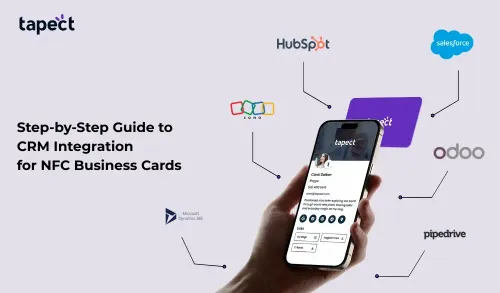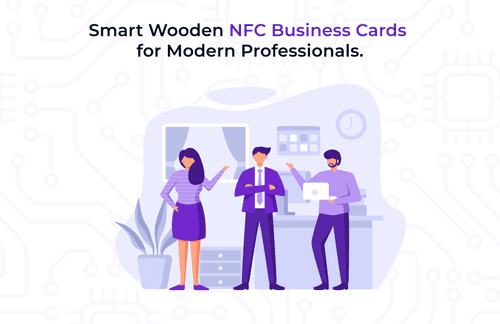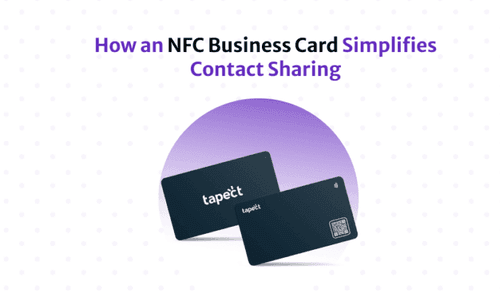In today’s digitally-driven world, networking is more essential than ever. Traditional communication methods, such as paper business cards, are quickly becoming outdated. Enter the era of NFC (Near Field Communication) technology, where exchanging contact details is as simple as a tap. Custom NFC business card apps are leading this change. With the help of these apps, companies can create customized digital business cards that are easily shared and retrieved by NFC-capable devices. In this article, we will explore the development and benefits of NFC business card applications and how they are transforming modern networking.
The Evolution of Business Cards
Business cards have long been a staple in professional networking. They are convenient, portable, and an essential part of making a lasting first impression. However, the traditional paper business card has its limitations. They can be easily misplaced, require physical space to store, and offer limited information. More importantly, they are not environmentally friendly, given the significant amount of paper waste they generate.
NFC technology offers a modern solution to these issues. With NFC business cards, all it takes is a tap of your smartphone to transfer contact information, social media profiles, website links, and more. This technology not only enhances the convenience and efficiency of exchanging information but also significantly reduces the environmental impact.
What is NFC Technology?
NFC, or Near Field Communication, is a short-range wireless technology that allows devices to communicate when they are within a few centimeters of each other.It is frequently utilised in data transfer, access control, and contactless payment systems. NFC technology is secure, reliable, and easy to use, making it ideal for applications such as digital business cards.
When integrated into a business card, NFC technology enables the instant transfer of information between two NFC-enabled devices. This seamless interaction is particularly valuable in networking scenarios, where quick and efficient sharing of information can make a significant difference.
Developing NFC Business Card Applications
An important advancement in networking solutions is the creation of NFC business card applications. Businesses may generate dynamic and engaging digital business cards that make a lasting impact on customers, partners, and prospects by utilising NFC technology. Here’s a closer look at the key components and features involved in developing these applications.
Secure User Authentication
Security is a top priority in any digital application, and NFC business card applications are no exception. Secure user authentication ensures that only authorized individuals can create and manage their digital business cards. This can be achieved through various methods such as password protection, biometric verification, or two-factor authentication.
Intuitive User Interface
An intuitive user interface is crucial for the success of any application. NFC business card applications should be designed with user-friendly interfaces that make it easy for users to create, customize, and manage their digital business cards. This includes drag-and-drop functionality, customizable templates, and real-time previews.
Comprehensive Analytics
One of the significant advantages of digital business cards is the ability to track engagement metrics. Comprehensive analytics dashboards can provide valuable insights into how often cards are shared, viewed, and interacted with. This data can help businesses understand their networking effectiveness and make informed decisions about their marketing strategies.
Integration of Affiliate Programs
To expand reach and engagement, NFC business card applications can integrate affiliate programs. This allows users to promote their services or products through their digital business cards, offering incentives for referrals and driving additional business opportunities.
User Experience
The user experience should be at the forefront of developing NFC business card applications. Sharing and accessing digital business cards should be as seamless and intuitive as possible. This involves ensuring compatibility with a wide range of NFC-enabled devices, fast and reliable data transfer, and minimal steps required to share or receive information.
Benefits of NFC Business Cards
Comparing NFC business cards to conventional paper business cards reveals several advantages. Here are some of the key advantages:
Convenience and Efficiency
NFC business cards eliminate the need for physical exchange and manual entry of contact information. With a simple tap, all relevant information is transferred instantly, saving time and reducing the likelihood of errors.
Enhanced Information
Digital business cards can hold significantly more information than traditional paper cards. In addition to contact details, they can include links to social media profiles, websites, portfolios, and more. This allows for a more comprehensive and interactive networking experience.
Environmental Impact
By reducing the need for paper, NFC business cards contribute to environmental sustainability. This aligns with the growing trend towards eco-friendly business practices and can enhance a company’s reputation as a responsible and forward-thinking organization.
Real-Time Updates
Unlike paper business cards, which require reprinting whenever there is a change in information, digital business cards can be updated in real-time. This ensures that the information shared is always current and accurate.
Cost-Effective
Although there is an initial investment in developing NFC business card applications, they can be more cost-effective in the long run. The costs associated with printing, reprinting, and distributing paper business cards are eliminated.
Conclusion
The advent of NFC business card applications represents a significant advancement in networking solutions. By leveraging NFC technology, businesses can create innovative, efficient, and eco-friendly alternatives to traditional paper business cards. These digital business cards offer enhanced functionality, real-time updates, comprehensive analytics, and a superior user experience.
As we continue to move towards a more digital and environmentally conscious world, NFC business cards are poised to become the new standard in professional networking. They not only streamline the exchange of information but also reflect a company’s commitment to innovation and sustainability. Embracing this technology can provide businesses with a competitive edge, making a lasting impression in an increasingly digital marketplace.



